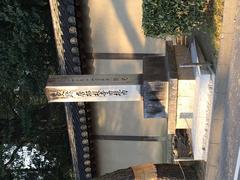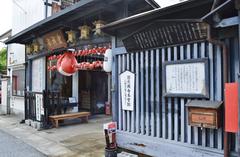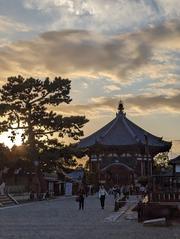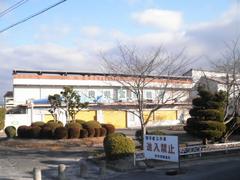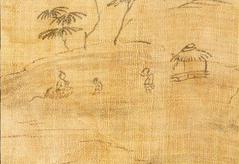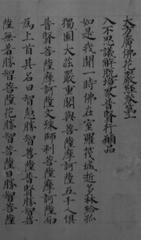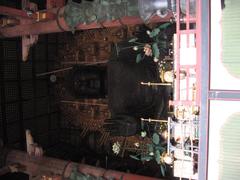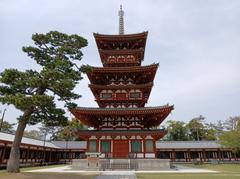
Toshodai-ji Visiting Hours, Tickets, and Complete Guide to Nara’s Historic Temple
Date: 14/06/2025
Introduction
Tōshōdai-ji (唐招提寺) stands as one of Nara’s most treasured historical and spiritual landmarks. Founded in 759 CE by the Chinese Buddhist monk Ganjin (Jianzhen), the temple is a living testament to the religious, architectural, and cultural innovations of the Nara period. As the head temple of the Ritsu school of Buddhism and a UNESCO World Heritage Site, Tōshōdai-ji draws visitors with its exceptional Tempyo-era architecture, exquisite Buddhist art, and tranquil gardens. This guide offers a comprehensive overview of Tōshōdai-ji’s history, main highlights, visiting hours, ticket information, accessibility, seasonal events, and travel tips, ensuring you make the most of your visit to Nara’s ancient capital.
For the latest updates, visit the official Tōshōdai-ji website and the UNESCO World Heritage listing for Historic Monuments of Ancient Nara.
Historical Background
Founding and Early Development
Tōshōdai-ji was established in 759 CE by Ganjin, who, after enduring a perilous journey from Tang China and losing his eyesight, brought with him the teachings and monastic discipline of the Ritsu (Vinaya) school. The temple was founded on the estate of Prince Nitanabe, reflecting the convergence of religious and imperial histories. Its earliest structure, the sutra repository from the prince’s residence, remains the oldest building on the grounds (chrononaut.jp).
Initially a private and modestly endowed temple, Tōshōdai-ji received support from the state. The relocation of the Higashi Chōshūden, a government office building from the Heijō Palace, exemplifies how imperial resources were marshaled to support the fledgling institution.
Significance in Japanese Buddhism
Ganjin’s arrival marked a turning point in Japanese Buddhism, introducing formalized monastic discipline and contributing to the standardization of Buddhist practice nationwide. Under his leadership and that of his disciples, Tōshōdai-ji became a center of Buddhist learning and the propagation of the Ritsu school, shaping the religious landscape of Nara and the nation (UNESCO).
Architectural and Artistic Highlights
Tōshōdai-ji’s temple complex boasts a series of architectural masterpieces and artistic treasures, many designated as National Treasures or Important Cultural Properties.
Main Hall (Kondō)
The Kondō is a prime example of Tenpyō-era architecture, featuring eight entasis columns and a seven-bay-wide façade. Inside, visitors encounter the principal image of the seated Rushana Buddha (Vairocana), flanked by statues of Yakushi Nyorai and Senju Kannon. The hall’s design and statues exemplify the transition from dry lacquer to wooden sculpture techniques, marking a pivotal moment in Japanese Buddhist art (Toshodaiji Official).
Lecture Hall (Kōdō)
Originally an imperial office relocated from Heijō Palace, the Kōdō is among the few surviving examples of secular Nara-period architecture adapted for religious use. Today, it houses a later statue of Maitreya Buddha and serves as a venue for lectures and Buddhist ceremonies (Toshodaiji Official).
Kōrō (Shariden)
The Kōrō, or Shariden, is the only multi-storied structure in the precinct, built in the 13th century to enshrine Buddhist relics. It is the centerpiece of the annual Uchiwamaki (Fan Scattering) Ceremony, held on May 19 (Toshodaiji Official).
Mieidō and Ganjin’s Statue
The Mieidō, west of Ganjin’s tomb, exemplifies aristocratic residential architecture and houses the revered portrait statue of Ganjin, displayed publicly only in early June. The hall also features modern fusuma-e (sliding door paintings) by Higashiyama Kaii, celebrated for their serene landscapes (Toshodaiji Official).
Ordination Platform (Kaidan)
The stone ordination platform in the western precinct symbolizes Tōshōdai-ji’s role in Buddhist precept transmission, underscoring its importance as a center for monastic discipline (Toshodaiji Official).
Storehouses and Repositories
The temple’s azekura-style storehouses—the Hōzō and Kyōzō—are among the oldest examples of their kind, preserving sutras and temple treasures. The modern Shin-hozō repository ensures ongoing preservation of cultural assets (Toshodaiji Official).
Gardens and Seasonal Scenery
Tōshōdai-ji’s landscaped grounds feature cherry blossoms in spring and vibrant maple leaves in autumn. Moss gardens, ancient trees, and tranquil ponds enrich the visitor experience, reflecting the harmonious integration of architecture and nature (Bespes-JT).
Visiting Information: Hours, Tickets, and Access
Hours
- Opening Hours: 8:30 am – 5:00 pm (last admission 4:30 pm). Hours may vary during special events; confirm on the official website.
Tickets
- Admission Fee: 600 yen (as of 2025). Discounts are available for students and groups. Special exhibitions, such as the public display of Ganjin’s statue, may require separate tickets (Japan Experience).
Access
- By Train: From Kintetsu Nara Station, transfer at Yamato-Saidaiji to the Kintetsu Kashihara Line. Alight at Nishinokyo Station (short walk to the temple).
- By Bus: From JR Nara or Kintetsu Nara Station, take buses #70, #72, or #97. Alight at Toshodaiji-higashiguchi or Toshodaiji.
- By Car: Limited on-site parking is available.
Accessibility
The grounds are mostly flat and accessible, with wheelchair access to primary precincts. Some areas, such as the approach to Ganjin’s grave, involve uneven paths and bridges.
Facilities
- Restrooms: Available near the entrance and main precincts.
- Shops: Small gift shop selling souvenirs and literature.
- Vending Machines: Near the entrance.
- Dining: No café on-site, but restaurants are nearby.
Events and Seasonal Highlights
Uchiwamaki (Fan Scattering Festival)
Held on May 19, this unique festival features the scattering of round fans from the Kōrō to honor temple abbots and Ganjin. The ceremony is a vibrant display of local religious tradition (Japan Experience).
Ganjin’s Death Anniversary
Each June, the portrait statue of Ganjin is exhibited for several days, offering a rare opportunity to view this National Treasure (Mselanie.com).
Seasonal Beauty
Cherry blossoms in spring and maple foliage in autumn make Tōshōdai-ji especially picturesque. The moss gardens and tranquil ponds provide year-round beauty and a contemplative atmosphere.
Visitor Experience and Etiquette
- Atmosphere: Generally quiet and uncrowded, especially on weekdays and mornings.
- Photography: Permitted outdoors; prohibited inside the main hall and certain buildings.
- Etiquette: Dress modestly, maintain a respectful demeanor, and follow signage regarding photography and restricted areas.
- Guided Tours: English signage is limited—consider hiring a local guide or joining a group tour for deeper insight (Nara City Tourist Information Office).
Frequently Asked Questions (FAQ)
Q: What are Tōshōdai-ji’s hours?
A: The temple is open from 8:30 am to 5:00 pm (last entry 4:30 pm).
Q: How much is admission?
A: 600 yen for adults (2025 rate); discounts for students and groups.
Q: Is the temple accessible for wheelchair users?
A: Most main areas are accessible, though some paths are uneven.
Q: Can I take photos inside?
A: Photography is allowed in exterior spaces but not inside the main hall or other designated buildings.
Q: Are guided tours available?
A: Yes; arrange through local tourism offices or online platforms.
Q: What’s the best time to visit?
A: Early mornings, weekdays, and during cherry blossom or autumn foliage seasons offer the best experiences.
Nearby Attractions and Suggested Itineraries
- Yakushiji Temple: Another UNESCO site, north of Tōshōdai-ji.
- Heijō Palace Site: Remnants of the ancient imperial palace.
- Nara Park: Home to Tōdai-ji, Kōfuku-ji, and friendly deer (PlanetWare).
Combine Tōshōdai-ji and Yakushiji for a half-day trip, or explore Nara Park for a full-day itinerary (Matcha-JP).
Cultural Insights
As the headquarters of the Ritsu sect, Tōshōdai-ji underscores the importance of monastic discipline in Japanese Buddhism. Ganjin’s perseverance and the temple’s fusion of Tang Chinese and early Japanese styles make it a vital site for understanding cross-cultural exchange and religious history (Mselanie.com).
Essential Contacts
- Tōshōdai-ji Official Website: toshodaiji.jp
- Nara City Tourist Information Office: Tel: 0742-24-4858 (Japan Experience)
Check these resources for the latest information on hours, events, and travel updates.
Visual Resources
- Tōshōdai-ji Virtual Tour and Map Image alt text: Tōshōdai-ji Kondō, main hall of the temple in Nara. Image alt text: Uchiwamaki Fan Scattering Festival at Tōshōdai-ji.
Summary and Final Tips
Tōshōdai-ji is an essential stop for anyone exploring Nara’s rich heritage. Its historic halls, revered statues, and serene gardens offer a journey through Japanese Buddhist tradition and artistic achievement. The temple’s accessibility, reasonable admission, and proximity to other renowned sites like Yakushiji and Nara Park make it ideal for both half-day and full-day itineraries. Seasonal events and rare exhibitions further enrich the visitor experience.
To plan your trip, consult the official website and trusted travel guides. For more travel resources and cultural updates, download the Audiala app and follow us on social media.
Discover the spiritual heart of Nara at Tōshōdai-ji—where history, art, and nature harmoniously converge. (UNESCO) (Japan Experience)
Sources and Further Reading
- Tōshōdai-ji Temple in Nara: Visiting Hours, Tickets, History, and Travel Guide, 2025, Chrononaut.jp
- Exploring Tōshōdai-ji: Architectural and Artistic Highlights, Visiting Hours, Tickets, and Nara Historical Sites Guide, 2025, Toshodaiji Official
- Visiting Tōshōdai-ji: Hours, Tickets, and Guide to Nara’s Historic Temple, 2025, Japan Experience
- Historic Monuments of Ancient Nara, 1998, UNESCO World Heritage Centre
- Heritage Highlights: Tōshōdai-ji Temple, 2025, Mselanie.com
